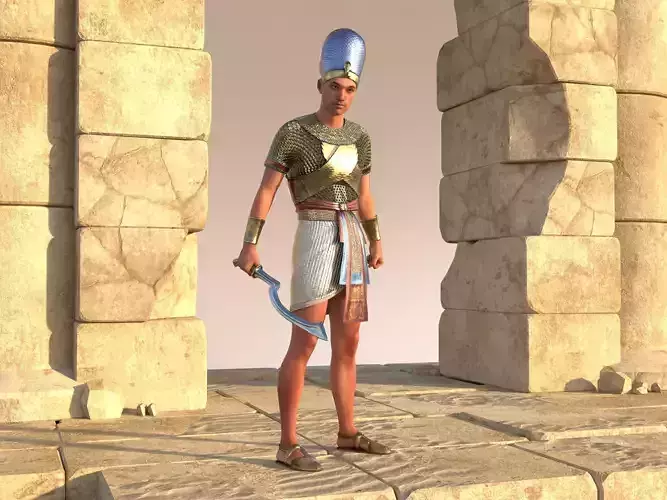1/21
Pharaoh - The Egypt Warrior Rigged
Photorealistic
Low-poly
PBR/Gameready
4K - 1K Texture Maps
POLYGONS - VERTICES
Egyptian Warrior 16384 vertices, 16196 polygons, 170 bone
Lashes464 vertices, 352 polygons, 61 bones
Pharaoh Warrior Outfit3412 vertices, 3093 polygons, 45 bones
Egyptian Weapon 6171 vertices, 6154 polygons
Pharaoh (/ˈfɛəroʊ/, US also /ˈfeɪ.roʊ/;Egyptian: pr ꜥꜣ; Coptic: ⲡⲣ̄ⲣⲟ, romanized: Pǝrro; Biblical Hebrew: פַּרְעֹה Parʿō)was the title of the monarch of ancient Egypt from the First Dynasty (c. 3150 BCE) until the annexation of Egypt by the Roman Republic in 30 BCE.[6] However, the equivalent Egyptian word for king was the term used most frequently by the ancient Egyptians for their monarchs, regardless of gender, through the middle of the Eighteenth Dynasty during the New Kingdom. The earliest confirmed instances of pharaoh used contemporaneously for a ruler were a letter to Akhenaten (reigned c. 1353–1336 BCE) or an inscription possibly referring to Thutmose III (c. 1479–1425 BCE).
In the early dynasties, ancient Egyptian kings had as many as three titles: the Horus, the Sedge and Bee (nswt-bjtj), and the Two Ladies or Nebty (nbtj) name. The Golden Horus and the nomen titles were added later
In Egyptian society, religion was central to everyday life. One of the roles of the king was as an intermediary between the deities and the people. The king thus was deputised for the deities in a role that was both as civil and religious administrator. The king owned all of the land in Egypt, enacted laws, collected taxes, and served as commander-in-chief of the military.[9] Religiously, the king officiated over religious ceremonies and chose the sites of new temples. The king was responsible for maintaining Maat (mꜣꜥt), or cosmic order, balance, and justice, and part of this included going to war when necessary to defend the country or attacking others when it was believed that this would contribute to Maat, such as to obtain resources
REVIEWS & COMMENTS
accuracy, and usability.





















